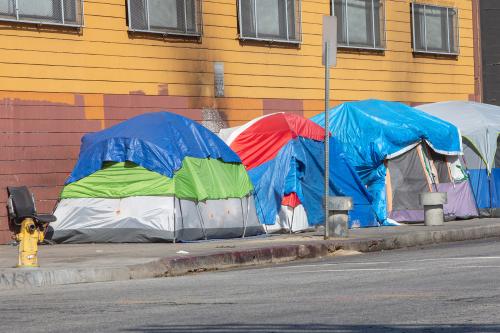Without a doubt, housing – and affordable housing – is a tough issue. It is an issue that is misunderstood and often maligned. It doesn’t receive the kind of national or even local attention it deserves. It is rarely discussed in a metropolitan context even though casual observers recognize that housing markets are metropolitan – not local.
Yet affordable housing is not just about shelter or social justice though, obviously, those are critically important issues. It is about economic competitiveness. It is about quality neighborhoods. It is about rewarding work and building wealth. And it is about community cohesion and continuity.
Hampton Roads is slated to add more than a half million residents in 350,000 new homes by 2030. Looking at it another way, in 2030 about 40 percent of the housing units on the ground will have been built since 2007. The question for this region is not whether it is going to grow – but how, where and for whom it is going to grow.
Fortunately, the time is ripe for that conversation in Hampton Roads today.
We know that nationally there are profound demographic, economic and social changes that are repositioning metropolitan areas like this one to compete globally in the 21st century. The growing and diverse population is looking for a range of choices in transportation, in neighborhoods, in shopping – and in housing. Those places that have a range of options have an opportunity to attract and retain quality workers and the assets of the knowledge economy.
Is Hampton Roads poised and ready? Well, not quite.
The region is currently experiencing a range of challenging housing issues. They stem from three main problems: price, production and location.
Despite recent slowdowns, prices continue to rise faster than the national average in every Virginia metro area, with this region leading the way. Since 2005, only eight of the top 50 metropolitan areas nationally experienced an increase in its housing price index greater than Hampton Roads.
There is also a production problem in the region. This may be tough to swallow if you’re in fast-growing Suffolk, or way out on the Peninsula. But the issue is not just that houses are getting built – but what kind of housing, and where.
Since 2000, most places built almost entirely single-family homes. Multiple-family housing – the kind needed to respond to the affordable housing challenge and the changing demographics – is scarce in this region. Just three cities – Norfolk, Hampton, Newport News – have about 55 percent of the multifamily housing units in the region, but only about one-third of the households.
So where does the region go from here?
Hampton Roads needs to expand its understanding of the nature and scope of its housing challenge. It is about regional competitiveness. It is not city vs. suburb, new place vs. old place, Southside vs. Peninsula.
This, then, opens the door to making sure the right kind of housing is getting built in the right kind of places – near to where people work and in ways that support reinvestment in the region’s core cities. In that vein, the tremendous market opportunities brought about the new light rail line should be exploited to a far greater degree than to date.
Hampton Roads has a wonderful chance to affect its destiny. As a former resident, I know it is a great place to live, work, go to school and raise children. I truly believe it can become one of the nation’s greatest metropolitan areas of the next century.
But unless it deals with two critical issues – housing affordability and balanced growth – it is not going to get there.



Commentary
Op-edHousing: The Critical Issue for the Future of Hampton Roads
November 4, 2007